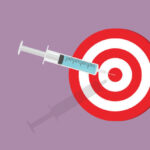Marketing terminology around remote patient monitoring devices can be confusing and sometimes even misleading. This article explains the differences between FDA-registered, FDA-cleared, and FDA-approved remote patient monitoring devices and their associated categories: Class I, II, and III. In addition, we explore what to be aware of when researching remote patient monitoring devices.
FDA-Cleared & FDA-Approved Remote Patient Monitoring Devices: What’s the Difference?
Some home monitoring technologies are legally classified as medical devices; others are not. All medical devices, including remote monitoring devices sold in the U.S., are regulated by the FDA. Furthermore, any remote health medical device manufactured, repackaged, relabeled, or imported by any company to sell in the U.S. must meet FDA regulations.
It is essential to note that remote patient monitoring device sophistication and features can vary significantly. The following section defines the differences between FDA-registered, FDA-cleared, and FDA-approved remote patient monitoring devices.
1) FDA-Registered: NOT the same as FDA-Cleared or FDA-Approved
Medical devices are not registered with the FDA. However, businesses that produce and distribute medical devices must register annually with the FDA. When a business registers, the FDA adds it to the registration database. Therefore, registering a business with the FDA database does not indicate approval, clearance, or authorization of organizations or medical devices.
Registration only means that the FDA knows about the manufacturer and its connected health devices. When a manufacturer is “FDA-registered” or “FDA-listed,” the manufacturer cannot claim their product is an “FDA-cleared” or “FDA-approved” remote patient monitoring device. Furthermore, when a business registers with the FDA, it does not receive a registration certificate.
When companies display FDA registration certificates to promote a medical device, it misbrands the device and violates the Federal Food, Drug, and Cosmetic Act. Therefore, you’ll want to move on if you see the phrase “FDA-Registered” in the marketing material for RPM devices.
2) FDA-Approved Remote Patient Monitoring Devices
FDA approval is only required for Class III medical devices with the most significant potential risk. For example, these devices usually sustain or support life, are implanted, or present a potentially unreasonable risk of illness or injury. One example of a class III medical device is an implanted pacemaker.
FDA approval for class III medical devices involves a lengthy data-gathering and submission process. If the FDA decides that the product’s benefits outweigh any known risks, it will “approve” that device for marketing and sale. It is important to note that not all remote patient monitoring devices require “FDA approval”.
The FDA has a different process for devices with lower associated risks to “clear” them for legal marketing and sale. However, medical device manufacturers sometimes incorrectly use “FDA-approved” for these lower-risk devices, even though they have not undergone the more rigorous approval process. If you see a remote patient monitoring device marketed as “FDA-approved,” you can go to Devices@FDA Database and enter the device or company name to verify the approval status of that device.
3) FDA-Cleared Remote Patient Monitoring Devices
“FDA clearance” is required to legally market and sell medical devices with fewer associated risks than FDA-approved devices. As a result, it is the most common regulatory pathway for remote patient monitoring devices. Companies receive FDA clearance when the FDA agrees that a device is substantially equivalent or similar to another FDA-cleared product. Only then can companies market medical devices as “FDA-cleared.”
With advancements in remote patient monitoring, it is important to understand that the process for FDA clearance differs from FDA approval. However, it still requires a formal application process called a 510(k) submission. In addition, the FDA-cleared device must meet the following qualifications.
- The device must use the same technology for the same purpose as an existing device.
- The device must be used for the same purpose as an existing device but may use different technology. However, the technology does not raise concerns about its safety or effectiveness. The manufacturer must provide evidence showing the product’s safety and efficacy.
With FDA-cleared remote patient monitoring medical devices, healthcare organizations and patients can rest assured that they are obtaining safe and reliable patient health data remotely. To search for FDA-cleared devices, go to Devices@FDA Database and enter the device or company name.
Be Aware When Evaluating Remote Patient Monitoring Devices
The FDA regulates and monitors the marketing of all medical devices in the U.S. to ensure consumer safety. Remote patient monitoring devices used to collect and transmit patient vital sign data must meet the FDA definition of a medical device. The FDA defines a remote patient monitoring device as:
- Non-invasive remote monitoring devices that measure or detect standard physiological parameters.
- Non-invasive monitoring devices that wirelessly transmit patient information to their health care provider or other monitoring entity.
It is essential to note that this does not mean that remote patient monitoring devices must be FDA-cleared. Medical device regulation is complex. Hence, it can be challenging to determine if a remote patient monitoring device is FDA-cleared.
If you are researching remote patient monitoring devices, ask if the RPM medical device is FDA-cleared. The data collected and transmitted by RPM devices are for clinical intervention. Therefore, ensuring data accuracy, security, and privacy is crucial. Utilizing an FDA-cleared remote patient monitoring device brings assurance and quality control.
Class I, II, and III Remote Patient Monitoring Medical Devices
Medical devices belong to one of three regulatory classes: Class I, II, and III. These three classes define the degree of control necessary to ensure the various instruments are safe and effective. An explanation of each category is listed below.
1) Class I Medical Devices
Remote patient monitoring devices typically fall outside this category. These devices present the lowest risk to the user and are often simpler than Class II or III devices. In addition, Class I devices do not contact vital organs in the central nervous or cardiovascular system. Therefore, these devices can only be marketed as FDA-cleared if they have undergone the 510(k) process. A 510(k) application and FDA clearance are not required before marketing the device if a device is in a generic category of exempted Class I devices. However, the manufacturer must register their company and list their product with FDA. Example Class, I medical devices include:
- Bandages
- Handheld surgical instruments
- Non-electric wheelchairs
2) Class II Medical Devices
43% of medical devices are in this category. Most remote patient monitoring devices in healthcare are considered Class II devices. Class II devices are more complicated and perform more critical functions than Class I. Thus, they require a formal review called a 510(k) submission. This review determines whether they are “substantially equivalent” to an existing device. When a class II medical device receives FDA clearance, it is considered “FDA-cleared.”
Examples of Class II wireless remote monitoring devices include:
3) Class III Medical Devices
Finally, just 10% of medical devices are classified as class III. These devices usually sustain or support life and are implanted. Class III device manufacturers must submit a premarket approval application. First, FDA experts decide if the device is safe and effective for treating diseases or conditions. Next, the application must include results from clinical studies. After this process, these devices can be marketed as “FDA-approved.”
Examples of class III medical devices are as follows.
- Breast implants
- Deep brain stimulators
- Pacemakers
- Defibrillators
- Fetal blood sampling monitors
- Implanted prosthetics
Advertising Requirements for Remote Patient Monitoring Medical Devices
Identifying flaws in the design of remote patient monitoring devices encourages continuous technological upgrades to improve patient outcomes. Medical device manufacturers must follow the Federal Food, Drug, and Cosmetic Act of 1938 requirements to ensure FDA compliance with advertising, which states:
- 21 USC B’ 352(q) provides that a restricted device is misbranded if its advertising is false and misleading.
- 21 USC B’ 352(r) states that a restricted device is misbranded if its advertising does not contain a brief statement of its intended use and relevant warnings, precautions, side effects, and contraindications.
Post-Market Surveillance of Remote Patient Monitoring Medical Devices
Post-market surveillance promotes safety and transparency and is good business. The FDA monitors the performance of all medical devices after marketing, primarily by receiving reports of device malfunction. In addition, medical device manufacturers and other organizations involved in distribution must meet post-market surveillance requirements specific to the device type. This means tracking systems and reporting device malfunctions, serious injuries, or deaths.
Medicare & Medicaid Requirements for Remote Patient Monitoring Devices
Medicare and Medicaid both have policy requirements for remote patient monitoring devices. To bill with CPT codes 99453 and 99454, a remote patient monitoring device must meet the definition of a medical device as defined by the FDA. In addition, each state has its remote patient monitoring billing and reimbursement policies for Medicaid.
Providers can check state Medicare policies at the Center for Connected Health Policy. A quick shorthand, though, is to see if the marketing material for that device indicates if it is FDA-cleared or FDA-approved, as mentioned previously, only medical devices can legally be marketed in this way.
Summary: FDA-Cleared & FDA-Approved Remote Patient Monitoring Device
The global remote patient monitoring market was USD 4.4 billion in 2022; by 2030, that number should grow by 18.5%. Further research shows that remote patient monitoring use jumped from 91 Medicare claims per 100,000 enrollees in February 2020 to 594 claims per 100,000 enrollees in September 2021. That’s a 555% increase.
It is safe to say that many more remote patient devices will go to market over the next several years. However, RPM device manufacturers must have a strong FDA and HIPAA compliance track record to ensure patient data is securely transmitted and stored. Therefore, health organizations should be on the lookout for improperly marketed devices.
Please book a consultation and free demo if you’d like to learn more about leveraging Tenovi’s FDA-cleared remote patient monitoring devices and software service solutions.






